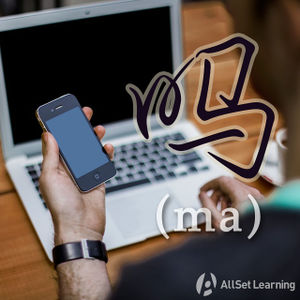Difference between revisions of "Tag questions with "ma""
| Line 22: | Line 22: | ||
* 这样 做,<em>对 吗</em> ? <span class="pinyin">Zhèyàng zuò, <em>duì ma</em>?</span><span class="trans">Do it like this, right?</span> | * 这样 做,<em>对 吗</em> ? <span class="pinyin">Zhèyàng zuò, <em>duì ma</em>?</span><span class="trans">Do it like this, right?</span> | ||
| − | * 你们 | + | * 你们 见 过,<em>对 吗</em> ? <span class="pinyin">Nǐmen jiàn guo, <em>duì ma</em>?</span><span class="trans">You’ve met, right?</span> |
* 他们 昨天 都 没 去, <em>是 吗</em> ? <span class="pinyin">Tāmen zuótiān dōu méi qù, <em>shì ma</em>?</span> <span class="trans">None of them went yesterday, right?</span> | * 他们 昨天 都 没 去, <em>是 吗</em> ? <span class="pinyin">Tāmen zuótiān dōu méi qù, <em>shì ma</em>?</span> <span class="trans">None of them went yesterday, right?</span> | ||
| − | * 你 没 来 过, <em>是 吗</em> ? <span class="pinyin">Nǐ méi lái | + | * 你 没 来 过, <em>是 吗</em> ? <span class="pinyin">Nǐ méi lái guo, <em>shì ma</em>?</span><span class="trans">You haven't been here, right?</span> |
* 你 喜欢 我妹妹, <em>是 吗</em> ? <span class="pinyin">Nǐ xǐhuan wǒ mèimei, <em>shì ma</em>?</span> <span class="trans">You like my younger sister, huh?</span> | * 你 喜欢 我妹妹, <em>是 吗</em> ? <span class="pinyin">Nǐ xǐhuan wǒ mèimei, <em>shì ma</em>?</span> <span class="trans">You like my younger sister, huh?</span> | ||
* 我们 去 你 家 , <em>好 吗</em> ? <span class="pinyin">Wǒmen qù nǐ jiā, <em>hǎo ma</em>?</span> <span class="trans">Let's go to your place, OK?</span> | * 我们 去 你 家 , <em>好 吗</em> ? <span class="pinyin">Wǒmen qù nǐ jiā, <em>hǎo ma</em>?</span> <span class="trans">Let's go to your place, OK?</span> | ||
Revision as of 08:21, 6 February 2017
-
Level
-
Similar to
-
Used for
-
Keywords
As well as yes / no questions, you can also form tag questions with 吗 (ma). Tag questions are quick questions that are tagged on the end of a sentence to ask for confirmation. In English, this is often done with "right?", or negatively with "isn't it?"
The easiest way to do this in Chinese is to add some kind of confirmation word and 吗 (ma) on the end of the sentence.
Structure
A you can see below, the pattern typically involves words like 好 (hǎo), 对 (duì), 是 (shì), or 可以 (kěyǐ), followed by 吗 (ma).
⋯⋯, 好 / 对 / 是 / 可以 + 吗?
By placing these on the end of a sentence, you can soften a suggestion or request confirmation.
Examples
- 这样 做,对 吗 ? Do it like this, right?
- 你们 见 过,对 吗 ? You’ve met, right?
- 他们 昨天 都 没 去, 是 吗 ? None of them went yesterday, right?
- 你 没 来 过, 是 吗 ? You haven't been here, right?
- 你 喜欢 我妹妹, 是 吗 ? You like my younger sister, huh?
- 我们 去 你 家 , 好 吗 ? Let's go to your place, OK?
- 不要 告诉 他 , 好 吗 ? Don't tell him, OK?
- 今天 我们 都 不 喝 酒, 好 吗 ? Let's all not drink alcohol today, OK?
- 我 现在 想 去 洗手间, 可以 吗 ?I want to go to the bathroom now. Is that OK?
- 妈妈,我 要 吃 巧克力 , 可以 吗 ? Mom, I want to eat chocolate. May I?
See also
Sources and Further Reading
- Chinese: An Essential Grammar, Second Edition (pp. 144-145) →buy
- New Practical Chinese Reader 1 (新实用汉语课本1) (p. 218) →buy
- Integrated Chinese: Level 1, Part 1 (3rd ed) (p. 106) →buy



